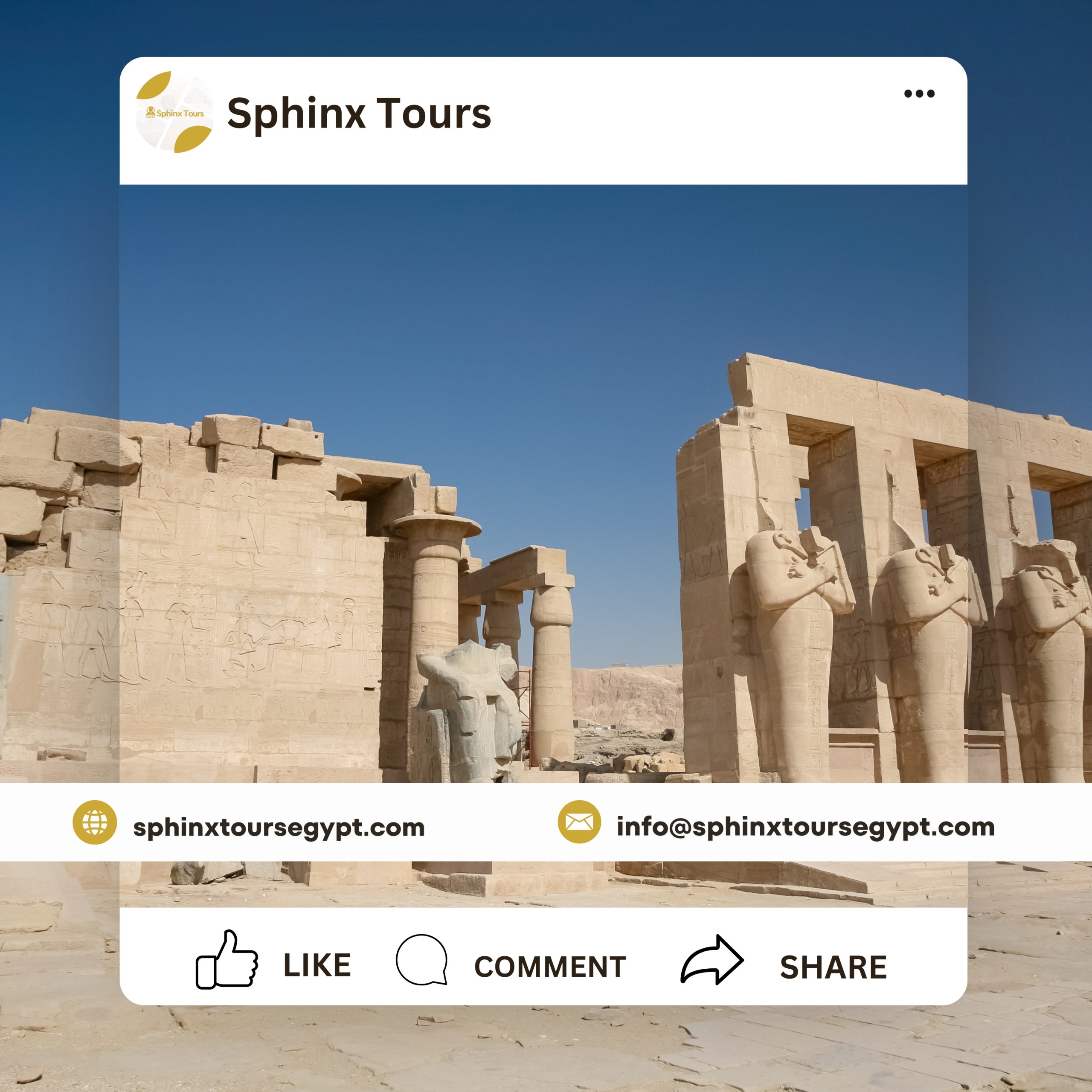Ramesseum Temple in Luxor
The Ramesseum Temple is one of the funerary temples that were built for the dead in ancient Egypt. It was built by King Ramses II, who was the king who had the most temples built for him. The temple includes huge statues of King Ramses II, and an important part of the inscriptions that tell the nature of life in this period. The pictures and inscriptions that decorate the temple walls record the events of the famous Battle of Kadesh in which King Ramses II defeated the Hittites and how he planned the war. There are many archaeological sites spread throughout Egypt, witnessing the succession of great civilizations throughout different historical eras; from ancient Egyptian, Greco-Roman, Coptic and Islamic monuments to modern era monuments, architectural and artistic vocabulary varies between places of worship, tombs, obelisks and palaces, each of which has its own distinctive character and aesthetics; therefore, we review in the following report a historical overview of the Ramesseum Temple. The Ramesseum Temple is located in the Theban Necropolis on the west bank of the Nile within a group of funerary temples for the kings of the New Kingdom, and can be reached via the road connecting the two statues of Memnon and the western bank of the Nile. The Ramesseum Temple is a funerary temple for King Ramses II. The temple’s architectural design was similar to the Abu Simbel Temple in Aswan, but it was exposed to a strong earthquake that led to the destruction of its facade and its entrance was changed to the current side overlooking the marina.
The walls of the Ramesseum Temple are engraved with many important scenes that date back to the era of King Ramses II, such as the scenes of the famous Battle of Kadesh, according to the Ministry of Tourism and Antiquities, in addition to devotional scenes that represent Ramses II with various deities.
The Ramesseum Temple is also engraved with some astronomical scenes that depict the seasons and months, as well as a scene depicting the name of Ramses II inside the sacred tree. The temple also contains a huge statue of King Ramses II that resembles the statue of “Memnon“. Ramses II ascended the throne of Egypt as a young man, twenty-five years old, to write lines of light, glory, pride and honor in the history of ancient Egypt, the ancient Near East and the ancient world, as if fate had an appointment with the birth and assumption of the rule of Egypt for that legendary king Ramses II, the King of Kings and Lord of the Ancient World. He enjoyed a long reign of about sixty-seven years, and left behind a large number of monuments and inscriptions. The name Ramses means “the god Ra created him” and his full name is “Ramses Mery Amun” which means “the god Ra created him, beloved of the god Amun”, and his throne name is “User Maat Ra Seteb En Ra” which means “the justice of the god Ra is strong, the chosen one of the god Ra”. The temple is considered one of the most beautiful temples in Egypt, consisting of the remains of broken Osirian roads and columns and a huge monument, half of which collapsed, and its roofs appeared to be made of bricks, which rise at the same level as the temple wall. The Egyptian-French archaeological mission headed by Christian Leblanc, working at the Ramesseum Temple in the West Bank area of Luxor, found important remains of the temple dating back to the era of the 19th and 20th Pharaonic dynasties, including a group of public kitchens, butcher buildings, and huge warehouses in addition to the school that was designated for teaching the children of workers. The temple is also known as the palace of millions of years, and the Greek historian Rioros mistakenly called it the tomb of “O Simandias”, which is a wrong Greek interpretation of the ancient name of Ramses II.


0 Comment